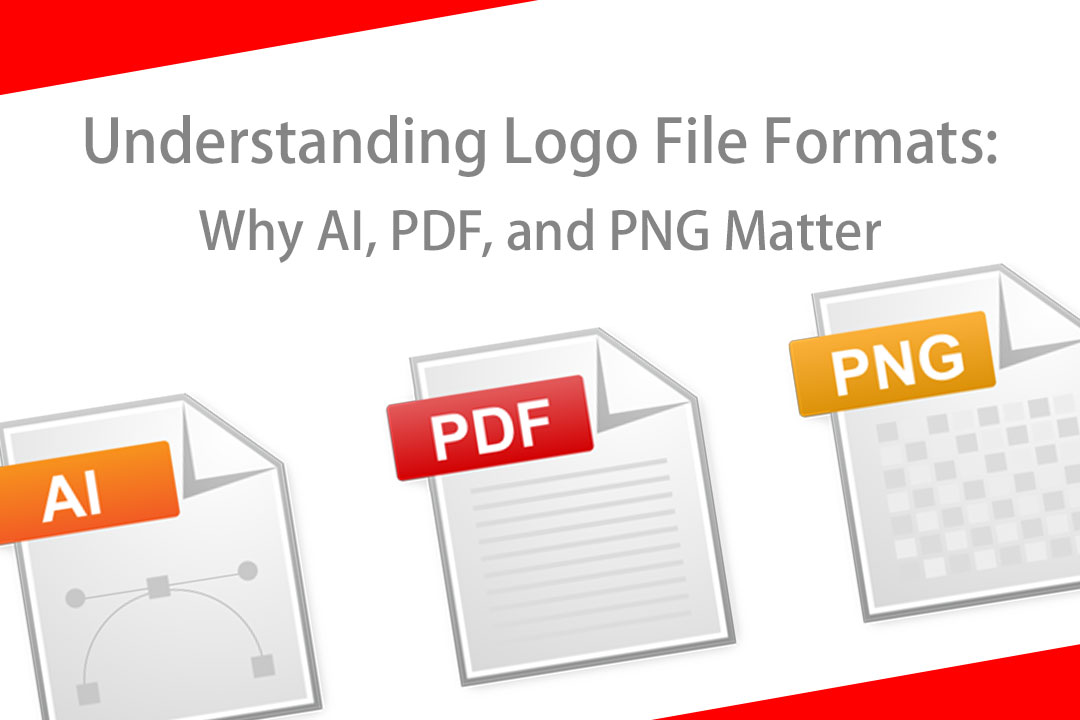
To help our clients better understand the different file formats for logo delivery, we will explain the characteristics and appropriate uses of each format.
We will focus especially on AI (Adobe Illustrator) files, detailing the significance of vector data and why delivery in AI format is so important.
1. AI Files (Adobe Illustrator Format)
Characteristics:
- Vector Data Format: AI files use vector data, which means they are not dependent on resolution. No matter how much you enlarge the image, it will never lose its sharpness, resulting in a very high-quality output.
- Editable: AI files are fully editable in Adobe Illustrator. You can freely change colors, adjust shapes, and edit text, offering complete flexibility over all design elements.
- Layer Structure: Even complex designs are easy to manage, as the elements are separated into layers.
Use Cases:
- Print Materials and Large-Scale Signage: AI files are ideal for print materials and large-scale signage that require high resolution. The quality remains intact regardless of the enlargement.
- Design Revisions and Reuse: If there’s a chance that the logo’s elements might need to be changed in the future, AI files are extremely convenient. You can retain the original design while making necessary adjustments.
Why Deliver in AI Format: AI files are crucial because they serve as the original data of the design. When used in print or other media, they ensure that the highest quality is maintained, free from resolution and size limitations. Furthermore, if any part of the design needs to be modified in the future, having the AI file allows for smooth adjustments. Therefore, delivery in AI format is the most flexible and valuable option for both clients and designers.
2. PDF Files
Characteristics:
- Cross-Platform Compatibility: PDF files can be opened on almost any device or operating system, making them highly convenient for confirming and sharing delivery files.
- Support for Both Vector and Raster: PDF files can include vector data, allowing for high-resolution printing.
- Fixed Layout: The design and layout remain intact, ensuring that the content appears exactly as intended.
Use Cases:
- Design Review Files: PDF files are commonly used for final design reviews and obtaining approvals.
- Print Files: In environments where AI files are not accessible, PDF files are often used for printing.
3. PNG Files

Characteristics:
- Raster Format: PNG files are raster images made of pixels, meaning they may lose quality when enlarged.
- Support for Transparent Backgrounds: PNG files support transparent backgrounds, making them ideal for logo designs without a background.
- Lightweight: The file size is relatively small, making PNG files suitable for websites and digital media.
Use Cases:
- Websites and Digital Content: PNG files are perfect when a lightweight image that displays quickly and leverages a transparent background is required.
- Simple Digital Presentations: PNG files are suitable for presentation materials and social media posts.
Conclusion
Choosing the right format for logo delivery is essential based on the intended use.
AI files are indispensable in professional design work as they maintain the highest quality while preserving design flexibility.
PDF and PNG formats can be used according to the situation, ensuring smooth communication with clients and effectively conveying the design’s intent.





